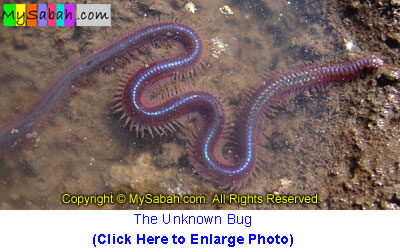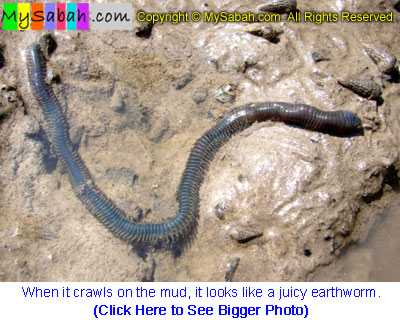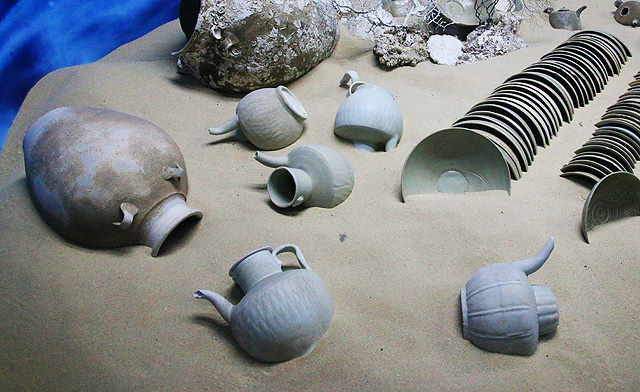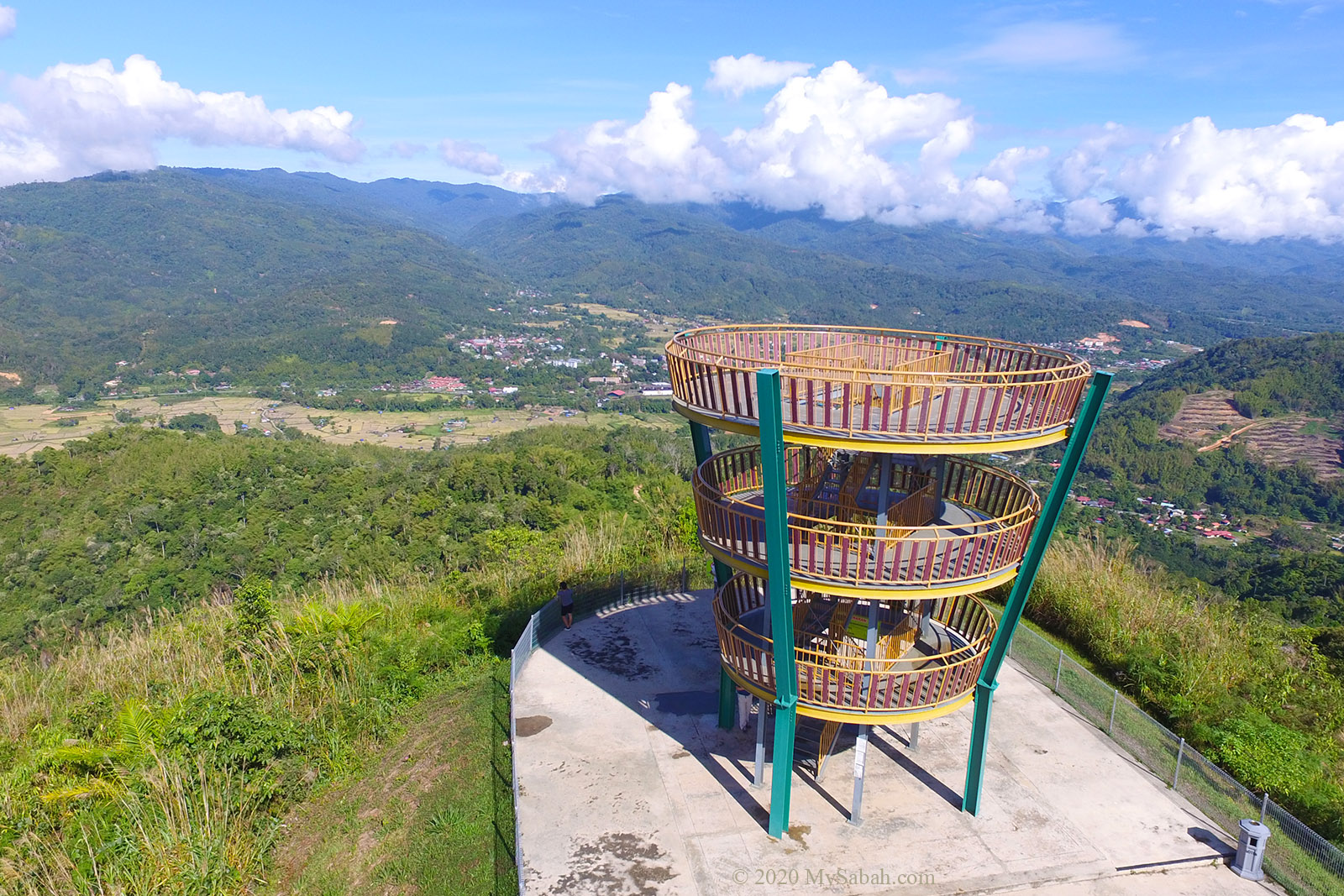This bug got hundred of legs, but it is not a millipede and centipede. It is a good swimmer and live in swampy area. I saw it in KK Wetland Centre (formerly KK City Bird Sanctuary) and mentioned it in my blog before.
To know it better, I invite him out for an interview.
I stood in front of its burrow and shouted, “Good Morning, Mr Leggy!”
I believed he heard me but no response.
I shouted louder again, “Mr. Leggy. We have an appointment today. Shall we meet up?”
Again, no reply.
I was getting impatient, so I said, “If you don’t show up, I will not post your photos on MySabah.com!!!”
Then a faint voice came from the burrow, “Wait… I heard you the first time. I am still busy putting on my shoes!”
OK, here you go. The pictures of Mr. Leggy below. I think it got more legs than any centipede. Usually this bug is nearly black, with a bit of glossy blue or green color, and only a few inches long. But this one is 1 foot (30 cm) long and with metallic magenta color, I consider this one is quite rare (new species?). It is such a beauty.
When I saw it swimming, I thought it was a water snake. Some locals call it “Sea Earthworm” and use it as a bait for fishing. The photos below show that it got eyes and 4 “horns”.
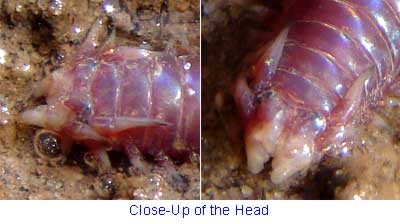
Its appearance looks scary, but it doesn’t bite. Its body is so soft that it would break apart if you hold it with hand. I took a few pictures of it then let it went.
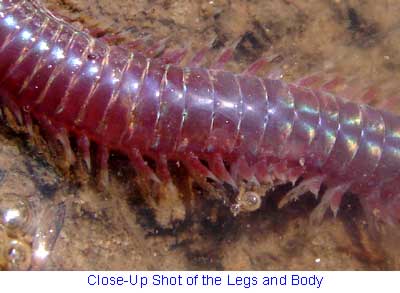
I also took a 25-second video clip when it swam in a container. In you are curious, CLICK HERE to Play the Video. I would like to find out its official and scientific name, but nobody is able to tell me. What it eat? Where it stay? How it live? I would like to know more. Please tell me if you know anything about it..
Updated (Dec 7, 06)
I found another kind of this bug, which I believe is another species. It is very similar with the one above in terms of body structure and size. The main difference is the head. This one has longer antenna and it is in black color, with a bit of dark blue. In fact, this species is more commonly seen in mangrove forest.
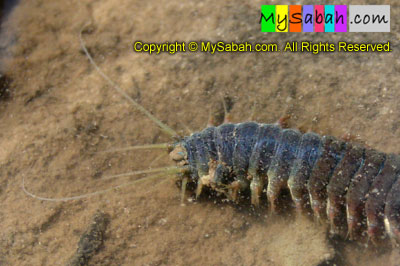
Last Tuesday morning I decided to explore deeper inside the mangrove forest. While resting, I saw a big worm crawled on the muddy surface. “Such a big earthworm!” I looked closer. No… It is that leggy bug again. Before that, I thought it was only active in the water since it is such a good swimmer.
You may CLICK HERE to Play the 20-sec Video that shows how it crawls. It tried to explore a burrow but was attacked by a crab inside. Warning! Viewer Discretion Advised.
| Updated (Dec 12, 06) Thanks to Dr Chris Glasby from Darwin, Australia. Below is the description of the identities of these 2 bugs: Both ‘bugs’ are polychaete worms belonging to the family Nereididae. Bug 1 is almost certainly Namalycastis abiuma, which is a species that prefers moist coastal areas like mangrove forests, coastal lagoons etc., and has a widespread distribution in the tropics and subtropics. It is unusual to see them in the open, as they prefer to hide amongst the rotting mangrove timbers, under rocks and other debris on, or near, the shore. Probably that is why they appear less common. Bug 2 is more difficult to identify from your photos. Judging by its general features I would say it is Paraleonnates bolus, a species also quite commonly found in mangroves. These worms also occur in the mangroves forests of Darwin – and they can often be seen scavenging on the surface of the mangrove mud. …it is also worth a note in a popular science journal, especially considering your nice pictures, and because ‘land’ polychaetes are quite rare and unusual. |
